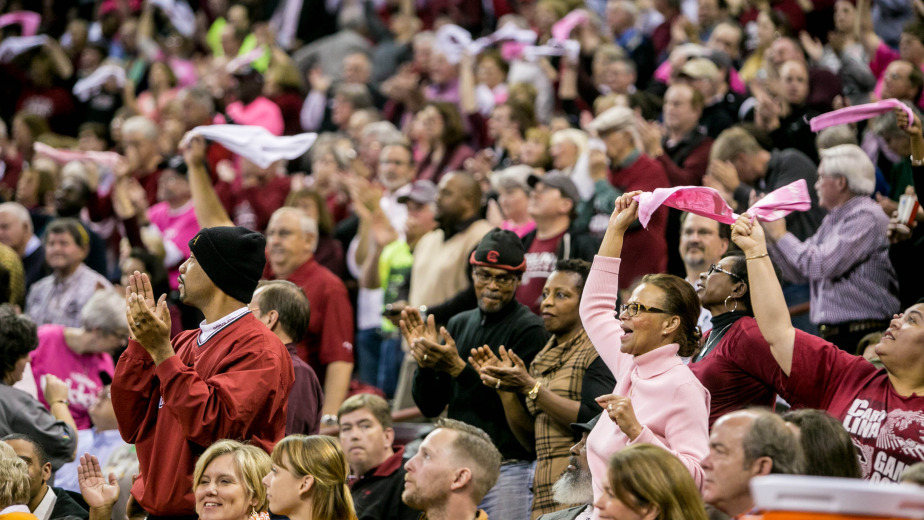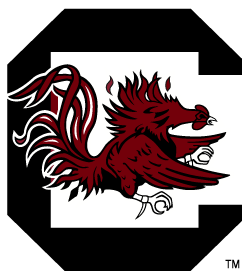
Change in NCAA Hosting Structure Aims to Improve Women's Basketball
March 10, 2015

Bigger crowds can make for a better experience for collegiate student-athletes. That’s just one reason why the NCAA’s recent change to grant postseason tournament hosting rights based on merit is good for the game of women’s basketball.
“The Division I Women’s Basketball Committee is continually looking for ways to improve the women’s basketball championship each year,” said Dru Hancock, chair of the Division I Women’s Basketball Committee and senior associate commissioner of the Big 12 Conference. “The top priority is for the student-athletes to have an experience that will last a lifetime and be at a championship-caliber level. Last year, the committee determined that having the top-16 seeds serve as the hosts for the first and second rounds of the championship, as well as moving the championship game days to Friday/Sunday and Saturday/Monday, was the right next step in ensuring the ultimate championship experience for our student-athletes and fans.”
In previous years, the first and second rounds of the NCAA Tournament were held at predetermined sites. This made it possible for a school to host without its team even making the tournament, thus having four teams play in front of less than capacity crowds. This was the case last year when South Carolina, having earned a No. 1 seed, played in Seattle at a site hosted by the University of Washington, which did not make the tournament field.
The Gamecocks weren’t alone in this scenario. Nebraska, which was the highest seeded team as a No. 4 in its regional, was sent to play in Los Angeles, California, along with North Carolina State, BYU, and the lowest seed in the regional, No. 13 Fresno State. Fresno is nearly 220 miles from Los Angeles. Despite being the highest seed in its regional, West Virginia, as a No. 2 seed played in a hostile environment at LSU, with the Tigers part of the tournament field.
That won’t happen in 2015 as the new hosting structure is similar to what has been done for many years in sports such as baseball and softball. This season, South Carolina leads the nation in attendance with more than 12,500 fans per home game, and will likely serve as a host site.
South Carolina head coach Dawn Staley is pleased with the change and believes that just as the top seeds in the SEC Tournament receive first-round byes, the top teams nationally should receive some sort of benefit for high achievement.
“I think the change is great because it’s based on your performance and your body of work throughout the regular season,” Staley said. “We have had to travel across different time zones the past couple of years for the tournament, and we had put ourselves in the position to be a top-16 team in the country. When you’ve done that, you want to be rewarded in some way. It helps you. You want to work as hard as you can to get that top seed. It’s in line with how our conference tournament is structured, so why not have the biggest tournament of the season structured the same way?”
Since the NCAA began sponsoring women’s basketball in 1982, it has become the most popular women’s sport. Despite its growing popularity, the sport still faces some financial challenges. That is one of the issues that prompted the NCAA in 2012 to hire Val Ackerman, the founding president of the WNBA and past president of USA Basketball, to conduct a comprehensive assessment of the state of women’s college basketball – both on and off the court. Ackerman’s White Papers was released in 2013 and examined the future of the game with proposals and recommendations to include changes in the NCAA tournament, playing rules, grassroots marketing, and corporate sponsorship, among other things.
“I think the whole basis of the way it is set up now gives the student-athlete an experience they won’t forget. If we’re playing in front of 10,000 fans, regardless of whether we are the home team or not, people will be treated to great basketball.”
Dawn Staley
The goal is to spark growth and keep the game’s popularity and interest from plateauing.
South Carolina is the perfect example of how to spark growth. In 2008, the Gamecocks hired Staley, the former Virginia All-American, Olympic gold medalist, WNBA all-star and then-Temple head coach, to rebuild its program. A steady increase in wins every year coupled with effective grassroots marketing has seen the Gamecock program ascend to four straight 25-win seasons, four straight NCAA Tournaments, a pair of Southeastern Conference championships and the program’s first SEC Tournament championship. Winning, coupled with active community involvement with the program, drove attendance figures to grow each year. Last year South Carolina averaged 6,000 fans per home game, and that figure more than doubled in 2014-15.
“I think it is a great start to keep the interest level high in women’s basketball,” Staley said. “When you are able to go on campuses where the program has won and puts a good product on the floor, with that product comes more people in the stands. The more people you reach, the better the position that women’s basketball will be.”
The ability to host the NCAA Tournament rewards the program for its on-court success, and rewards those fans who have already demonstrated their willingness to support women’s basketball. It will also allow student-athletes from the three other visiting teams to have a quality NCAA Tournament experience by playing in front of a large audience, even if their own fans are unable to travel from far away.
“I think the whole basis of the way it is set up now gives the student-athlete an experience they won’t forget,” Staley said. “If we’re playing in front of 10,000 fans, regardless of whether we are the home team or not, people will be treated to great basketball. Gamecock Nation loves to support our program, but I’m quite sure that they have an appreciation of great basketball. That’s the kind of fans that we have. That’s the kind of experience you want to give the student-athletes, whether they’re cheering for you or against you. As long as people are in the seats, it raises the level of play out there on the court.”
Ackerman’s research found that many coaches, who had historically favored neutral courts for early-round play, saw the value of increasing attendance even if it means they’re teams would be playing in a more hostile environment.
“So far, the move has been greatly supported by the schools and conferences in Division I,” Hancock said. “With the end goal being for the student-athletes to compete in front of large crowds and thereby have a championship-caliber experience, the collective feedback we’ve received has been very positive.”
Staley sees the move as another selling point coaches can use in building their programs.
“When you create a product that people can be proud of, they’re going to come out and support that team,” Staley said. “That’s what our fans have done for us. When you’re putting a good product on the floor, and you’re putting people in the stands, it’s a win-win for everybody. I know one team may be at a disadvantage playing on someone else’s home court, but the bottom line is about putting people in the seats and creating a great atmosphere for student-athletes.”
Women’s college basketball is not sitting back and resting on its past success. Keeping the student-athlete experience in mind, while not ignoring supportive fan bases is in the best interest of the game. The timing for this action is perfect for a South Carolina program stepping into the national spotlight.












